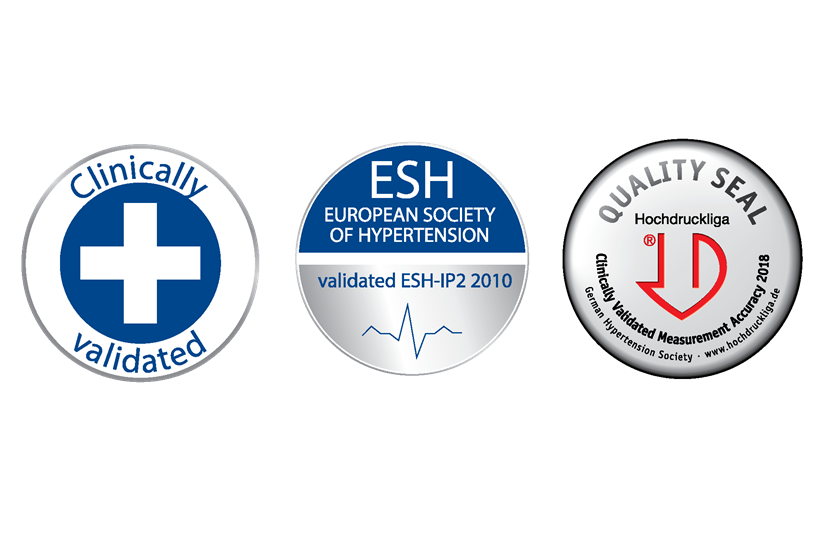The Veroval® 2 in 1 ECG and Blood Pressure Monitor is ideal for those who are suffering from high blood pressure together with diabetes and hyperlipidemia as they become more prone to develop cardiac arrhythmias. Being the most common cardiac arrhythmia, Atrial Fibrillation indicates a 5 TIMES increased risk of Stroke! 1, 2
Lots of people rarely feel their arrhythmia since it takes years to develop from silent atrial fibrillation to persistent3. Atrial Fibrillation may come in a clustered way with several weeks in between with only 1 in 10 paroxysms experience symptoms (e.g. palpitations, shortness of breath, chest pain)4.
With the portable Veroval® ECG and blood pressure 2 in 1 combined device you can now record your heart rhythm anywhere and anytime you experience symptoms.
Moreover, Veroval® ECG and blood pressure 2 in 1 combined device facilitates the reading thanks to the quick icon ‘OK’ display. If needed, the entire ECG can be printed or emailed to your doctor after transferring your values to Veroval® medi.connect software.
Veroval® ECG and blood pressure 2 in 1 combined device is also a fully automatic upper arm blood pressure monitor with high measuring capacity and the traffic-light-system on the upper right of the display describes the results as per the World Health Organisation (WHO) classification of blood pressure values.
In addition to fulfilling the legal requirements of the European Norm standards, , Veroval® ECG and blood pressure 2 in 1 combined device has been clinically validated in accordance with the protocols of the European Society of Hypertension(ESH) and the Deutsche Hochdruckliga(The German Association for High Blood Pressure – DHL) for high accuracy.
1 Go, A S et al. “Prevalence of diagnosed atrial fibrillation in adults: national implications for rhythm management and stroke prevention: the AnTicoagulation and Risk Factors in Atrial Fibrillation (ATRIA) Study.” JAMA vol. 285,18 (2001): 2370-5. doi:10.1001/jama.285.18.2370.
2. Miyasaka, Yoko et al. “Secular trends in incidence of atrial fibrillation in Olmsted County, Minnesota, 1980 to 2000, and implications on the projections for future prevalence.” Circulation vol. 114,2 (2006): 119-25. doi:10.1161/CIRCULATIONAHA.105.595140
3.Rienstra, Michiel et al. “Symptoms and functional status of patients with atrial fibrillation: state of the art and future research opportunities.” Circulation vol. 125,23 (2012): 2933-43. doi:10.1161/CIRCULATIONAHA.111.069450
4. American Heart Association (c2021)„FAQs of Atrial Fibrillation“ accessed: 2021-01-28, www.heart.org/en/health-topics/atrial-fibrillation/afib-resources-for-patients--professionals/afib-awareness.











